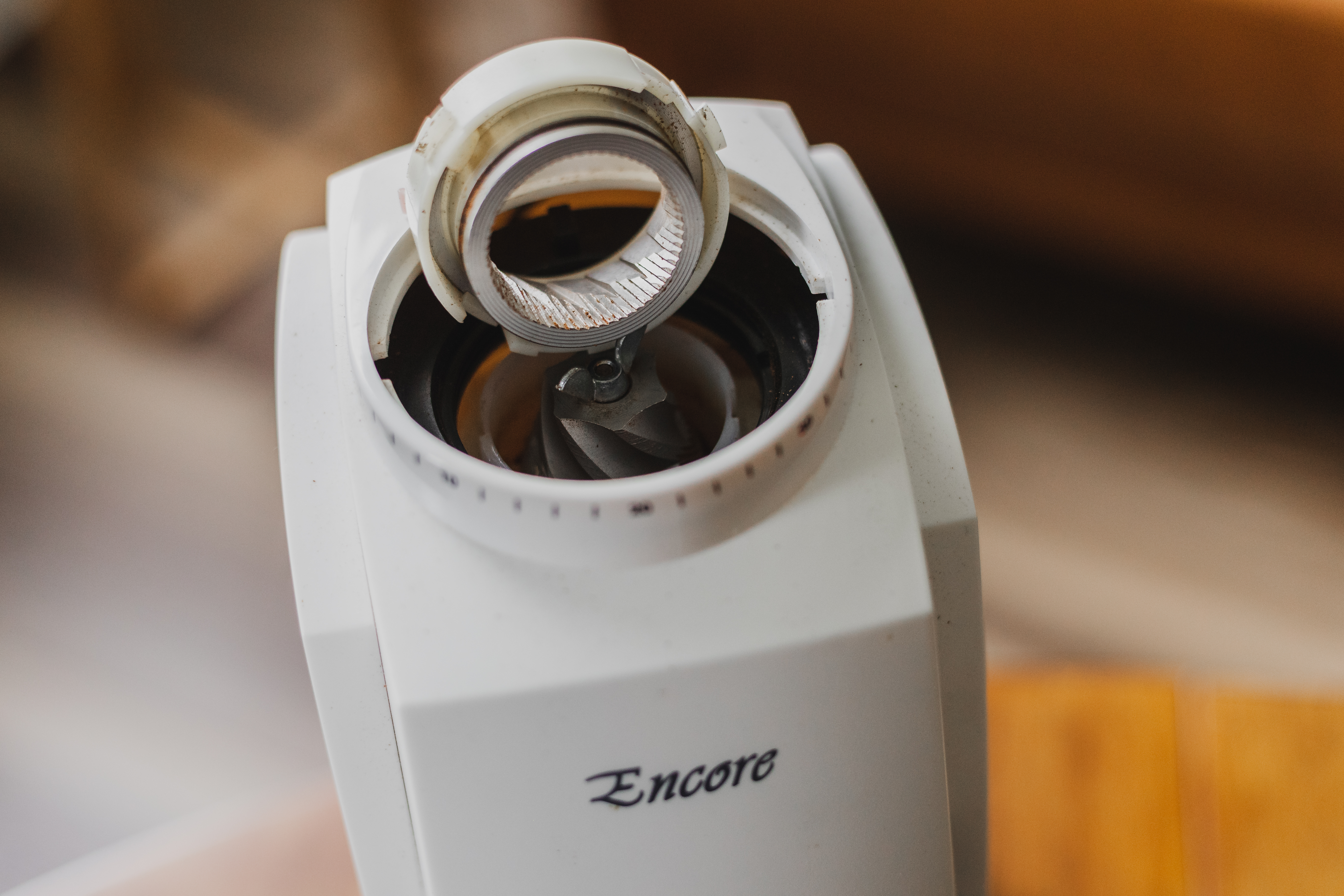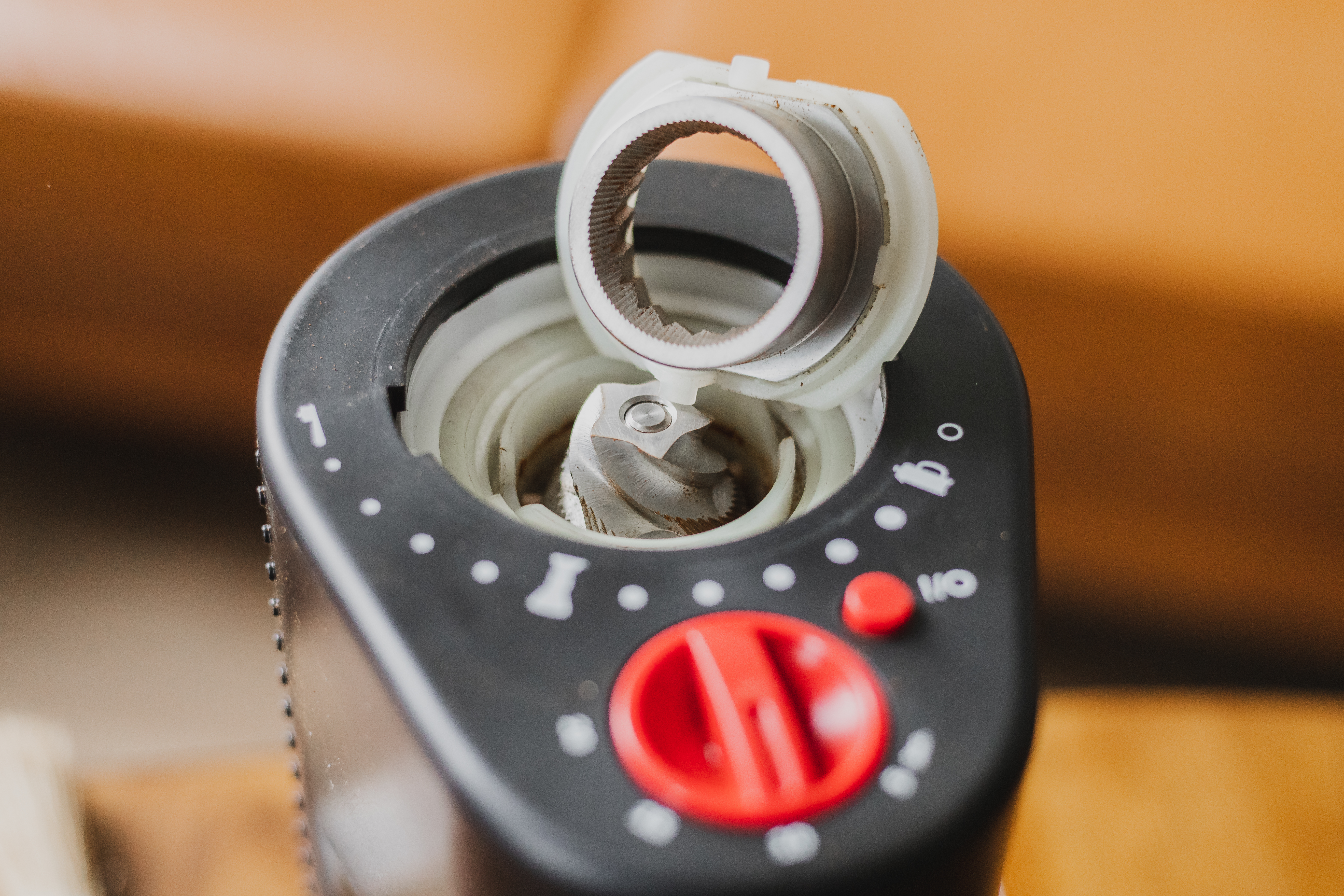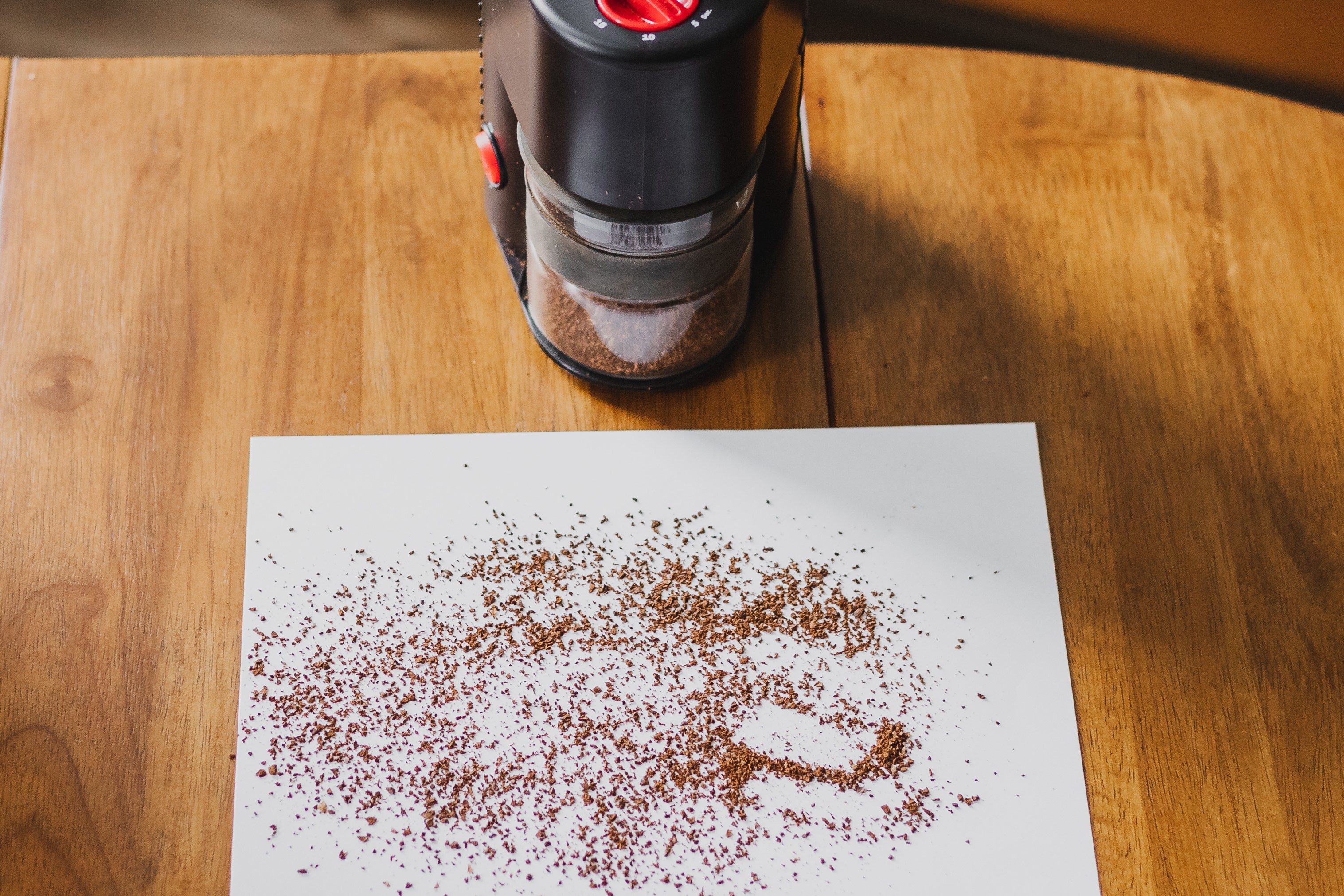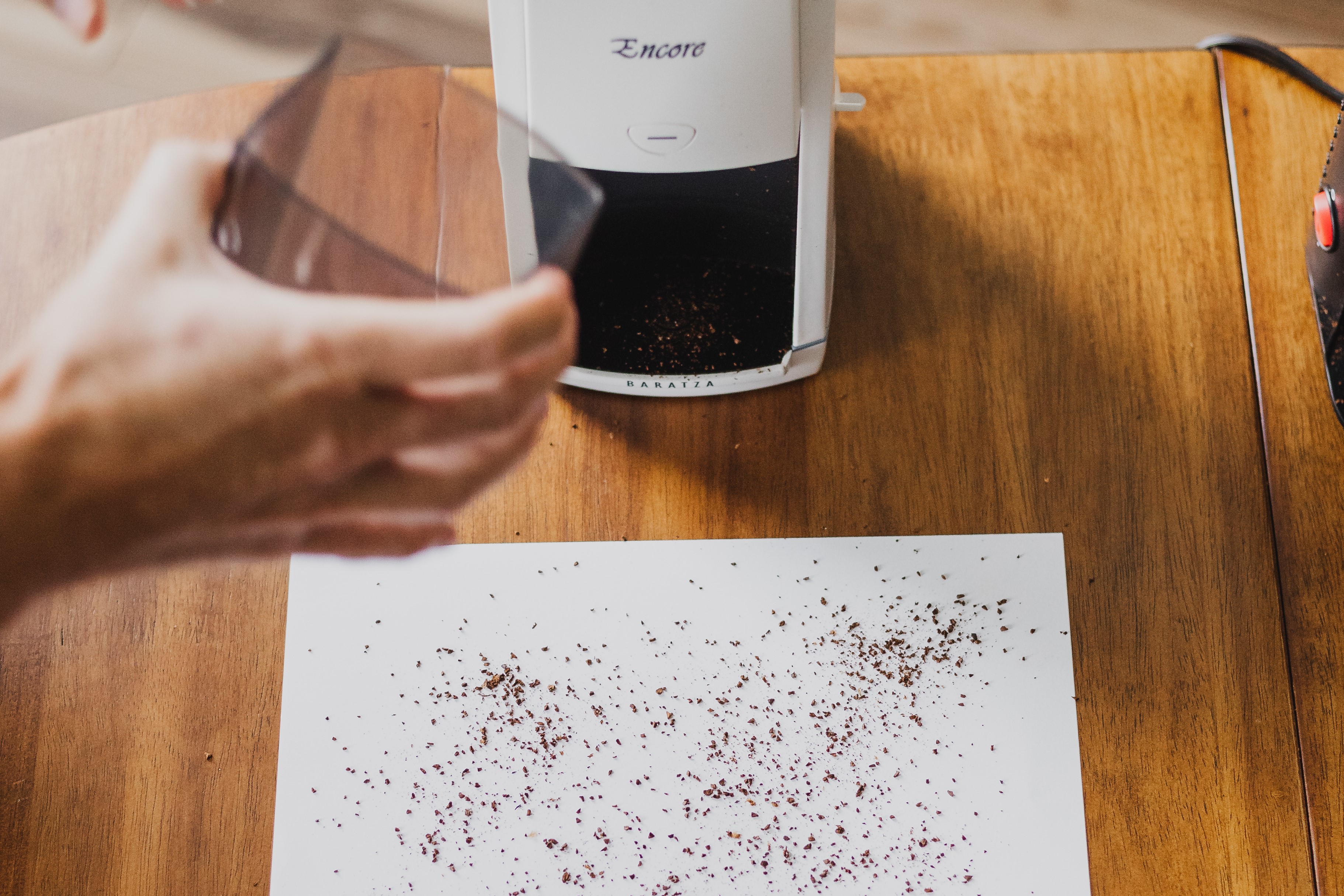An Entry-Level Burr Grinder Comparison: Baratza Encore vs. Two Alternatives
Baratza’s customer service is legendary and the company’s refrain—“Don’t dump it, fix it!”—is not just lip service. Baratza truly believes in its products and has engineered them in a simple way that makes repairs easy; and it believes in its people and has trained them to make repairs—should there be any—easy for anyone. If something is amiss with your grinder, from the burrs to the motor, they will diagnose the problem and, if necessary, ship replacement parts immediately; plus they’ll send directions, in written or video form (or both if you ask), on how to replace the parts yourself without the aid of fancy tools, service techs, or the wisdom of calloused hands. Baratza is not kidding around. The Encore could be the first and last grinder you will ever need to purchase.

But what about the other, very popular, entry-level burr grinders on the market? Cuisinart is a household name, but the company is mainly known for mass-produced food-prep products like blenders, mixers, and cookware. Bodum is a household name, too, mostly known for its ubiquitous C-Mill blade grinder, which is a very popular first grinder for new coffee drinkers, and all sorts of other gear like French Presses and drippers modeled after the iconic Chemex.
The question is: what separates Baratza from the pack? We have already mentioned its customer service, but what about the Encore’s performance? How does it stack up? We wanted to know, so we took a closer look at the Encore and two of the most popular burr grinders on the market: the Cuisinart Supreme Grind ($59.95) and Bodum Bistro ($99).
Burrs
The grinder is the most important piece of equipment for a good cup of coffee. We know from experience that blade grinders are incapable of producing a consistent grind and are insufficient for most coffee enthusiasts; and since we heavily curate our catalog, we do not sell any. We believe grinders begin with burrs.

We have written about the Cuisinart burrs (quite critically) before. Even though the company calls them burrs, the grinding tools in the Supreme Grind are “false burrs.” (These are not to be confused with “ghost burrs,” which are on the Orphan Espresso Apex and which grind coffee to beguilingly uniform sizes and shapes.) Most stainless steel burrs are machined. Sharp edges are cut into the metal to create the breakers and teeth. Think of a master craftsman working with solid wood. False burrs, on the other hand, are the particle board equivalent: tiny pieces of metal are pressed together in a mold to create a form. This process costs much less but creates blunt, not sharp, edges. Run your fingers across a steel burr and you can feel the edges; but run your fingers across a false burr and you will feel only contours.

The Encore and the Bistro, on the other hand, have stainless steel conical burrs, which have those sharp edges as a result of the CNC process in addition to having a logic to the shape: big breakers at the top cut the beans into manageable sizes and the teeth at the base fine-tune the grind size. On both models, the center (cone) burr rotates and the outer burr is stationary. On both, the outer burr can be removed for cleaning by simply pulling it straight up and out. We did notice, though, that the Bistro’s outer burr did not seat firmly; instead, it could be rocked back and forth once it was in its place. The Encore’s outer burr is fitted with a gasket that prevents it from moving. This difference, though seemingly insignificant, might be responsible for the differences we found in grind quality.

Grind Quality
The Cuisinart has flat burrs, but, as we explained above, those burrs aren’t real burrs; they are false burrs which grind coffee to heavily powdered grounds, i.e., grounds with a lot of fines. The problem seems to be that there just aren’t any sharp edges on the surface of the burrs. In fact, the sharpest part of the burrs is the heads of the screws that hold them in place. This means that most of the cutting is done by the screw; most of the pummeling is done by the surface of the burrs. When a bean is pounded by a dull surface, it breaks into unpredictable and imprecise shapes and sizes; the result is a grounds bin full of fines and semi-fines in addition to grounds of the desired grind size. It’s a mish-mash and each time is a little different. What is always constant, though, is the slew of fines. This grinder is a fining machine. It is also the loudest burr grinder we have ever worked with, so loud in fact that it is hard to be in the same room as the grinder when it is grinding.

The Bistro and Encore, on the other hand, have stainless steel conical burrs, so the grind quality is better. Conical burrs are known for producing a bimodal grind distribution, which is to say in addition to the chosen grind size they will produce some fines. Imagine a bell curve with a little bumpy tail. This is different from flat burrs that are supposed to produce more of a unimodal grind distribution, meaning just the chosen grind size and not too many fines. The distribution curve for these looks more like a bell curve.

Our conclusion is that the Bodum Bistro is pretty good for a few settings and then it produces boulders at an alarming rate. The company’s website says 12 settings, which is the number of lines for reference, but the grinder actually has 24 settings—there is a setting between each line, too. However, only about half of the settings are truly usable, so 12 is the number after all. The problem we found with the Bistro was not in fines but in boulders. The first setting is appropriate for a small V60—a little finer than what the Fellow Ode produces—and the next five or six settings increase incrementally as expected. Once the settings reach the middle, however, the boulders are introduced and their increase in number from one setting to the next is exponential. We think this is due to the RPMs. The Bistro’s motor spins about twice as fast as the Encore’s. This bouldering creates two problems. The first is that it is difficult to tell, for half the settings, what method the grind size is appropriate for, because the boulders get in the way of an accurate assessment; and the second is that those boulders make an even extraction nearly impossible. The boulders, being much larger than the rest of the grounds, extract much more slowly, if at all (it’s hard to get the good stuff from deep within a bean shard).
As expected, because we have so much experience with it, the Encore produces a fairly clean grind (i.e., without boulders) for all the methods of home coffee brewing, which is why we have selected it as the bar for entry-level electric grinders. Like the Bistro, another conical burr grinders, it produces a predictable amount of fines. Not too many (like the Supreme Grind) but not an incredibly low amount (like the Orphan Espresso Apex).

Unlike the Bistro, though, it does not overproduce boulders at medium grind sizes. Plus, a slightly improved grind is possible with an upgrade to the M2 cone burr (read on for info on the welcome ubiquity of Baratza parts). At the finest setting, the grind is powdery fine and fit for everything north of espresso (it is a stepped grinder, so even though espresso is technically possible, it is not ideal); and at the coarsest setting, the grind is mostly the larger particles fit for cold brew or, according to some people’s preferences, fit for nothing—a bit too coarse. Either way, the range is wide and most of the 40 settings (if not all of them) are appropriate for brewing and extracting evenly. That many settings allows for small changes in grind size and the ability to dial in brewing methods even when small changes are made in the dose or roast. The company has created a helpful guide for grind settings, which is fairly accurate.
Parts and Accessories
The Encore is made to last forever even if there are a few fixes along the way. As such, Baratza’s website is packed with parts. For the Encore alone, there are 33 parts: ostensibly every part needed to make an Encore from the small stuff (washer, nut, gasket) to the vital (motor, cables, burrs) and everything in between. One could presumably assemble a working Encore from the available parts. What’s more, Baratza has recently added some add-ons to the Encore lineup, including an accent kit.
Cuisinart offers parts on its websites, too, but the selection, being quite limited, is not meant to aid in any repairs or accessorizing. One can buy a replacement hopper, hopper lid, or grind chamber, and that is all. The prices are mystifyingly high: $31.50, $8.50, and $21, respectively. Remember: the grinder, the entire machine, costs only $59.95. These three parts—none of which includes a motor, burrs, and wiring necessary for grinding coffee—cost a total of $61. Sixty-one dollars! Cuisinart is sending a clear message to customers: toss it, don’t fix it; and buy a new grinder. This is corroborated by the fact that the rotating burr is deep-set and cannot be removed because instead of screws it appears to be fixed in place by rivets.
Bodum is not much better when it comes to parts and accessories. To the company’s credit, the prices are reasonable, but the selection, like that for Cuisinart, is limited and not sufficient to cover any repairs. No motor, no wires. There are only two parts available for the Bistro: a replacement glass grinds catch (with white or black silicone sleeve) for $8.99 and what appears to be the outer burr (though it is called “Component: Conical burr grinder to electric coffee grinder,” so it is unclear what is being listed) for $14.99. The message here, similar to the one being communicated by Cuisinart, is to buy a new grinder if something goes wrong.

Conclusion
We love Baratza. We believe in its products and people. We also believe wholeheartedly in its philosophy: don’t dump it, fix it. What often goes overlooked in our convenience culture is waste. Baratza is dedicated to minimizing waste. This is a noble approach for a company that sells premium grinders at an affordable price.
It also hasn’t escaped us—and this is one of the reasons we have loved it since the beginning—that Baratza is a grinder company. It is narrowly focused on designing, manufacturing, and supporting grinders and only grinders; what’s more, there are only nine products in its catalog. Nine! This means that everyone at Baratza, from the engineers to the customer service reps, have not only seen and operated each product; they can wrap their heads around all of them. This is completely at odds with the companies behind the other popular inexpensive electric grinders. Cuisinart sells appliances, cookware, bakeware, cutlery, grills, etc.; and Bodum, in addition to coffee and tea gear, now sells towels, toasters, mixers, lunchboxes, grilling equipment, travel mugs, bowls, and more. It is very unlikely that the people on the phone, should you ever have to call customer service, have ever seen most of the products in these companies’ catalogs, let alone used them. We know there are other entry-level electric grinders on the market, such as the OXO conical burr grinder, which is also fairly popular, but OXO, too, while a respected company, is stretched thin with products, so naturally not every one will be a home run.
All of this is to say: perhaps the reason why we have been and remain convinced in Baratza’s products has something to do with its focus on making and supporting great home grinders and nothing else. In this way, the company operates much like its commercial cousins—Mahlkönig, Mazzer, Ditting—and manual grinder siblings—Comandante, Kinu, Orphan Espresso—who are committed to mastering the art of grinding. They don’t have time for much else and that is a good thing.



